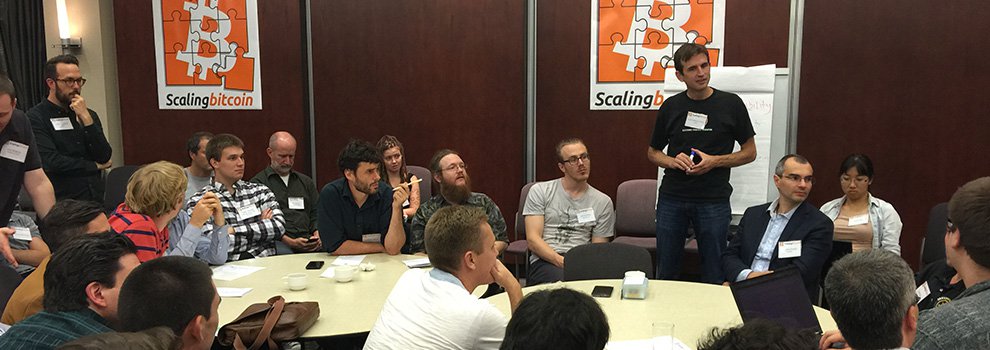Notable Bitcoin Core Contributors Now Open to Increasing Block-size Limit to 2 or 4MB
Although some individuals in the Bitcoin community believed that nothing would come out of the recent Scaling Bitcoin workshop in Montreal, it seems that some progress was made in finding a compromise between the small-block decentralists and the big-block progressives.
Multiple discussions between some of the key minds in the Bitcoin Core development community took place at the event this past weekend, and it seems the overall goal was to find the key areas of agreement between all of the contributors’ wide-ranging points of view. Rumors were originally swirling around a possible implementation of Adam Back’s 2-4-8 block-size limit increase proposal, but it appears that the area of agreement is more general than that.
A Short-term Bump in the Block-size Limit
Instead of implementing a long-term solution as soon as possible, the majority of Bitcoin Core contributors are interested in a short-term fix. When reaching out to Blockstream co-founder and President Adam Back to clarify some of the rumors that were swirling around the Montreal workshop, the longtime applied cryptographer pointed to a short summary of the discussions between Bitcoin Core contributors posted to the bitcoin-dev mailing list by Bitcoin Core Developer Jeff Garzik. In his summary, Garzik noted:
“Many [are] interested or at least willing to accept a ‘short term bump,’ a hard fork to modify block size limit regime to be cost-based via ‘net-utxo’ rather than a simple static hard limit. 2-4-8 and 17%/year were debated and seemed ‘in range’ with what might work as a short term bump – net after applying the new cost metric.”
The 2-4-8 plan is Adam Back’s simple fallback plan of increasing the block-size limit to 2 megabytes now, 4MB in two years, and 8MB in four years. This is similar to Garzik’s BIP 102, which simply increases the block-size limit to 2MB on November 11, 2015. The 17 percent per year plan is in reference to Bitcoin Core Developer Pieter Wuille’s plan to increase the block-size limit in accordance with technological advancements. The 17 percent per year number is based on data publicly released by Cisco on an annual basis.
Avoiding an Endless Block-size Increase
Blockstream co-founder and Bitcoin Core Contributor Matt Corallo also chimed in in regard to the Scaling Bitcoin discussions on the bitcoin-dev mailing list. He noted that there does not seem to be widespread consensus on the idea of a block size that continues to grow over time. He noted:
“Still, the ‘greatest common denominator’ agreement did not seem to be agreeing to an increase which continues over time, but which instead limits itself to a set, smooth increase for X time and then requires a second hardfork if there is agreement on a need for more blocksize at that point.”
More Work to Be Done in Hong Kong
There are bound to be more discussions before the next Scaling Bitcoin event in Hong Kong, but that’s where real proposals can be presented alongside test results based on the guidelines for scaling outlined in the Montreal event. Although some view a small block-size limit increase as nothing more than “kicking the can down the road,” the reality is that more time is needed to fully develop long-term solutions, such as the Lightning Network or flexcap, that could help Bitcoin scale to millions (or even billions) of users over time. For now, it seems that a simple block-size limit increase to 2MB or 4MB is an area where many notable Bitcoin Core developers and contributors have found some common ground.
Kyle Torpey is a freelance journalist who has been following Bitcoin since 2011. His work has been featured on VICE Motherboard, Business Insider, RT’s Keiser Report, and many other media outlets. You can follow @kyletorpey on Twitter.
The post Notable Bitcoin Core Contributors Now Open to Increasing Block-size Limit to 2 or 4MB appeared first on Bitcoin Magazine.



